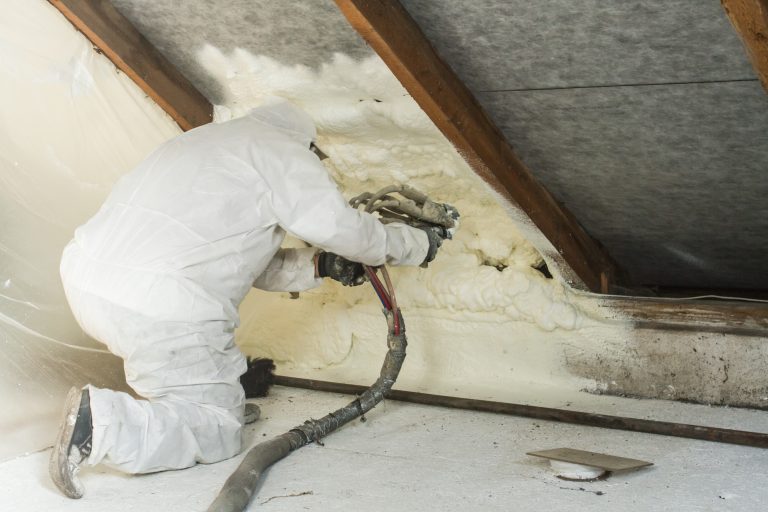Insulation keeps your desired temperature at home for the whole year. Usually, efficient insulation reduces the heat during summer and alleviates the cold during winter. This helps save more energy. In addition, most types of insulation also serve as a soundproofing material like the Rockwool 100mm Insulation. Hence, insulation has become essential in every home.
Today, most houses are constructed with high-grade insulation to regulate temperature. Yet, in old houses, more work is needed as most of them lack proper insulation. To have efficient insulation, homeowners could look for providers. These professionals can install the necessary materials and make the homeowners feel more comfortable. But before they’d do that, homeowners have to choose the appropriate type of insulation first.
If you want to know more of the choices, here’s an article about the different types of insulation you can choose from:
1. Floor Batts And Rolls
20% of energy loss happens through the flooring. This is enough reason floor insulation is necessary for every home. Floor insulation is usually classified into two: batts and rolls. The main difference between the two is their length. Rolls are traditionally longer than batts.
Batts and rolls are usually made of fiberglass, plastic, or natural fibers, such as sheep’s wool and cotton. Typically, they’re inserted in between joists and studs. Because of this, floor batts and roll insulation need to be installed in the early parts of house construction, or at least when the floors still have the necessary spaces for the insulating materials.
If you live in a house without floor installation and want to install one, you may seek the help of professional installers. Another option is to do it yourself. You may ask someone you know who has tried it before or go to sites such as earthwool.com.au that provide installation services.
2. Door And Window Insulation
Many homeowners insulate their doors and windows to optimize their climate control technology at home. To attain this, most houses use concrete block installation. This is inserted inside a door or a window. Another way is to install it outside of the door panel, especially the part facing outside or the warmer part of the house.
To further improve the insulation, blown-in and spray foam insulation forms are also used. These insulation forms are ideal if the windows have deep cavities and hard-to-reach spaces. The installer uses a blowing machine for that purpose.
3. Foam Boards Or Rigid Foams
Most homeowners prefer foam boards for unvented roofs because of their thickness. Because of this quality, they could add thermal control. When installed outside, these boards may require weatherproof compounds so that they can stand against the elements. In addition, foam boards or rigid foams could supplement foundation walls for optimal insulation. Many homeowners install these foams as basement wall insulation.
4. Reflective Barrier
Homeowners in hotter climates typically use reflective barriers in areas that receive direct sunlight, such as the attic. Usually, this barrier is placed between rafters and beams. Contrary to most types of insulation, reflective barriers bounce the heat they receive. This way, the heat doesn’t penetrate these materials.
With an efficient HVAC system, a reflective barrier could be helpful to regulate the temperature coming out of a building’s vent, further improving the temperature inside.
5. Structural Insulated Panels (SIP)

For the roofs of newly constructed buildings, many installers and homeowners prefer SIPs because of their high strength-to-weight ratios. Basically, SIPs are standard insulation boards sandwiched between structuring insulation materials. SIPs are preferable because they could go up to 8 by 24 feet in terms of dimension. This makes them ideal as insulation for roofs. Aside from this, SIPs are some of the quickest insulation materials to install.
Discover how to qualify for an ECO scheme external wall insulation grant by reading Warma UK’s guide, ensuring eligibility and potential cost savings for energy-efficient home improvements.
6. Loose Fill
Loose-fill types are fiberglass, cellulose, and slag wool—the majority of which are recycled materials. Similar to blown-in forms, the loose-fill type is ideal for enhancing the insulation of finished areas. This type, as its name suggests, fills in cavities in walls and other hard-to-reach areas.
Wrapping Up
Insulation is a necessity in every home. It has a long line of benefits, including reduced heat flow, efficient energy use, and lower electricity bills. Also, insulation, lately, has become a noise-proofing material. In addition, efficient home insulation helps in reducing greenhouse gas emissions.
If you’re planning to install insulation in your house, you may be wondering which type you should use. In choosing the best material, think about your needs first. Do you need to insulate your floors? Or are there some cracks you need to fill in? Based on these situations, you can now select the suitable type of insulation material for your home.

